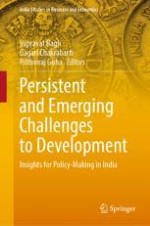2022 | OriginalPaper | Buchkapitel
19. Financial Inclusion in India: An Intertemporal Study
verfasst von : Papita Dutta
Erschienen in: Persistent and Emerging Challenges to Development
Verlag: Springer Nature Singapore
Aktivieren Sie unsere intelligente Suche, um passende Fachinhalte oder Patente zu finden.
Wählen Sie Textabschnitte aus um mit Künstlicher Intelligenz passenden Patente zu finden. powered by
Markieren Sie Textabschnitte, um KI-gestützt weitere passende Inhalte zu finden. powered by
